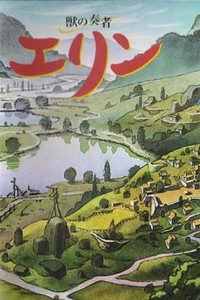Review
by Carl Kimlinger,Beast Player Erin
| Synopsis: |  |
||
The more Lilan flourishes under Erin's care, the more attention they garner. Each achievement draws them closer to exposure, and when they end up saving the queen, no amount of well-meaning obfuscation by her allies at Kazalum can save her from the scrutiny of the court. Initially the kindness and understanding of the queen saves her, but it isn't long before even that is no protection. Tensions between the Wajyaku soldiers who protect the kingdom and the Holon aristocrats who command them are coming to a head—tensions that some within the court will do anything to see to a violent conclusion. People who want protection against the Tohda and are willing to go to cruel lengths to make sure Erin and Lilan provide it—cost be damned, human or animal. |
|||
| Review: | |||
Where Erin's first half was the story of a young girl maturing into a woman of intelligence and potential influence, its second half is the story of that woman, bullied by the winds of change into becoming the cornerstone of a new era. It is of necessity a story with fewer quicksilver shifts than the tale of Erin's youth, and with larger and more noticeable lapses in forward motion. But for all that, it is still engrossing viewing, and for the exact same reasons: it tells a good story and tells it well. Here it is a tale, not of adulthood forged from tragedy or of slow maturation and friends made and lost, but of fateful encounters and dark schemes and the inexorably churning wheels of fate. It's very much a slow-motion narrative trap, a slowly enclosing web of circumstances that enmeshes poor Erin and pulls her into the flow of history. Erin succumbing to the machinations of the increasingly hissable Dahmiyah is a painful—and painfully extended—sight, but one that builds a very palpable sense of dread, an uneasy anticipation that keeps you nailed to the last bittersweet frame. It's pretty deep territory for what is, nominally at least, a children's anime. The series never really resembled the shiny silliness of your stereotypical kids' show, but here it goes far beyond being merely less reductive or more contemplative. Erin is no longer a child, and her world isn't a child's. This is dark, even despairing work. War and death hang over every decision, betrayal infects even Erin and Lilan's bond, and more than once suicide is implied as Erin's only avenue of escape. Hardly the stuff of bedside tales. And that's before factoring in the carefully constructed social and political complexities of Erin's world, to say nothing of the lessons about self-destructive military power that run just under the surface of her quest to keep Lilan out of government hands. Dark and, yes, pokey as it is, Erin still works as children's entertainment, however. The series' convolutions are clearly and plainly illuminated, presented with a straightforwardness that neither talks down to its audience nor leaves any doubts as to exactly what is happening or why. The Mesoamerican-inflected art is striking but accessible to the end, simple and often bleak but always tinged with a touch of the fantastical, a CGI-fuelled sense of wonder that is no less real for sometimes being abstract. The more disturbing sequences are artfully stylized, their violence more frightening in its unreality than any amount of blood could make it. More importantly though, throughout the misfortune heaped upon its principals, the death they endure, and the terrifying representations of the power of the state, the message it sounds is classic children's lit: hope, endurance, and faith in the power of will and ideals to change the very world. Plus there's a happy ending...of sorts. A good story well told is, of course, no claim to perfection (though the confluence of its folk-art visuals and direct, wonderfully-sung score comes close, stylistically speaking). Some scenes are a little cheesy and others, like the weirdly sanitized Ohju mating ritual, are just plain off. Nuk and Mok continue to hang from the show's neck like albatrosses, or perhaps Jar Jar Binkses, and what with its dead spots and frequent flashbacks, the series could probably have been pared down to a lean, mean 35 episodes. But, even at a slightly bloated 50 episodes, it can still suck you in like a black hole and spit you, slightly chewed and happy for it, out the other side. A testament indeed to the enduring power of pure storytelling prowess. That the chewing can be shared by all ages is pure gravy. |
| Grade: | |||
|
Overall (sub) : B+
Story : B+
Animation : B+
Art : A-
Music : B+
+ Powerful and complex in its conclusion, but accessible still to all, adult and child alike, who like their fantasy smart and human. |
|||
| discuss this in the forum (16 posts) | | |||
| Production Info: | ||
|
Full encyclopedia details about |
||